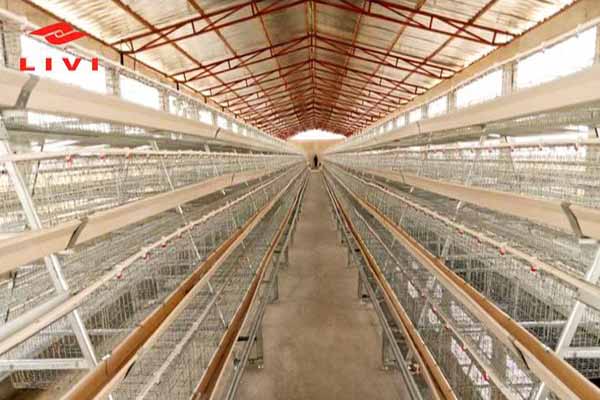Poultry Farm Guide for Beginners in Kenya
Time : 2025-07-01
Embarking on a poultry farming journey can be both exciting and challenging, especially for beginners in Kenya. Poultry farming has emerged as a vital source of income for many individuals and a substantial food supply for both rural and urban communities. However, starting a poultry farm requires a good understanding of the business and technical aspects of the industry. This comprehensive guide will equip you with the essential information needed to kickstart your poultry farming venture in Kenya.
Understanding Poultry Farming in Kenya
Before delving into the practical aspects of starting a poultry farm, it’s important to have a basic understanding of the poultry industry in Kenya.
Poultry Industry Overview:
– Poultry farming is the process of rearing chickens, turkeys, ducks, geese, and guinea fowls for meat or eggs.
– In Kenya, poultry farming has a significant role in rural and urban areas.
– The country consumes an estimated 3 million eggs daily and around 50 million chickens annually.
Key Aspects to Consider When Starting a Poultry Farm
1. Type of Poultry Farming:
– Decide whether you want to focus on meat production, egg production, or dual-purpose breeds that produce both meat and eggs.
– Kenya has a variety of indigenous breeds that are suitable for different types of farming.
2. Location:
– Select a location that is suitable for poultry farming. The ideal site should be away from human settlements to avoid diseases and pollution.
– Access to clean water, power supply, and transportation facilities are essential.
3. Capital Investment:
– Poultry farming requires an initial investment to set up the farm and purchase birds.
– It is advisable to start small, focusing on the cost-effective indigenous breeds.
– Seek loans, grants, or partnerships to fund your farm.
4. Bird Selection:
– Choose the right breed based on your goals, location, and market demand.
– Consider factors such as egg size, laying frequency, growth rate, and disease resistance.
5. Feed and Nutrition:
– Poultry requires a balanced diet rich in protein, carbohydrates, vitamins, and minerals.
– Indigenous breeds may have different feed requirements compared to imported breeds.
– Consider sourcing local grains and feeds to reduce costs.
6. Health and Welfare:
– Keep your birds healthy by implementing biosecurity measures to prevent diseases.
– Regular vaccination, deworming, and veterinary check-ups are crucial.
– Provide proper housing, adequate ventilation, and sufficient space for your birds.
Essential Poultry Farming Equipment
To ensure a smooth operation, you need to invest in essential equipment for your poultry farm. Here are some key items:
1. Coops and Pens:
– Construct sturdy coops and pens to provide a safe and comfortable living environment for your birds.
– Consider factors such as roof ventilation, flooring, and nesting boxes.
2. Feeding and Drinking Systems:
– Automated feeding systems and drinkers help ensure your birds have access to a constant supply of food and water.
– Water nipples are suitable for young chicks and adult birds.
3. Lighting Systems:
– Proper lighting is essential for egg production and overall bird welfare.
– Natural light is ideal, but you may need artificial lighting during shorter daylight hours.
4. Ventilation and Cooling Systems:
– Adequate ventilation is crucial to prevent disease and maintain optimal air quality.
– Install fans, misters, or shade structures to provide cool relief during hot weather.
5. Equipment for Hatching Eggs:
– If you plan to hatch your own birds, you will need an incubator, hatching trays, and brooder systems.
Marketing Your Poultry Products
To succeed in the poultry farming industry, you need a solid marketing strategy. Here are some tips to help you reach your target market:
1. Understand Your Market:
– Research your local market and identify your target customers.
– Understand their preferences and purchase patterns.
2. Develop a Brand:
– Create a strong brand identity to make your products stand out from competitors.
– Use high-quality packaging and branding materials.
3. Diversify Your Marketing Channels:
– Utilize social media, online platforms, and traditional marketing methods to reach a wider audience.
– Collaborate with local stores and markets to sell your products.
4. Maintain Good Relationships:
– Build long-term relationships with customers, suppliers, and industry stakeholders.
– Offer excellent customer service and be responsive to their needs.
Conclusion
Starting a poultry farm in Kenya requires careful planning, knowledge, and commitment. By understanding the basics of poultry farming, selecting the right location and breeds, investing in essential equipment, and implementing a robust marketing strategy, you can build a successful poultry farming business.
Remember, poultry farming is a dynamic industry, and staying updated with the latest trends, technologies, and market demands is crucial for long-term success.












